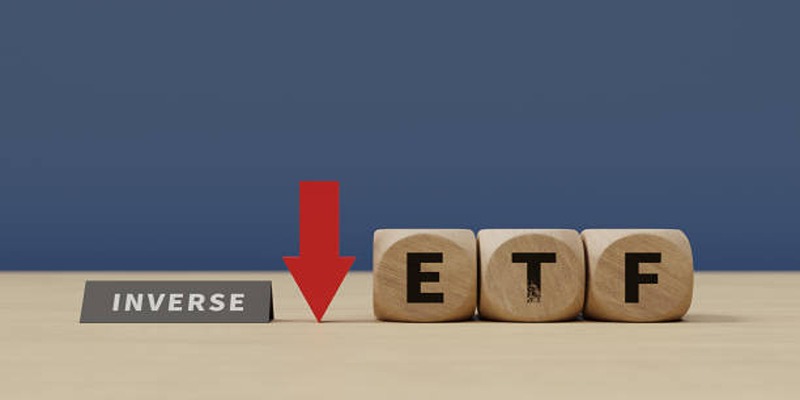Leveraged and inverse ETFs are special types of exchange-traded funds designed for short-term investments. They allow investors to potentially amplify returns or profit from market declines, depending on the fund’s strategy. Leveraged ETFs aim to multiply the daily gains of an index, while inverse ETFs try to move in the opposite direction of the market. These tools can be powerful but come with higher risks, making them suitable for experienced investors. Understanding how they work is essential before deciding to use them in your portfolio.
How Leveraged ETFs Work

Leveraged ETFs use various financial instruments such as options, futures, and swaps to replicate the returns of a specific index. They typically have a leverage ratio of 2:1 or 3:1, which means that for every $1 invested, the fund will provide exposure equivalent to $2 or $3 in the underlying index. For example, if an investor buys a leveraged ETF with a 2:1 ratio tracking the S&P 500 and the index goes up by 5%, the fund should return approximately 10%.
The leverage provided by these funds is obtained by using more of borrowings or through use of derivatives which in turn implies greater profit as well as greater possibilities of loss. This means that although the use of leveraged ETFs results in higher returns they are also subject to more risk than other ETFs. When the market is working against the fund strategy, the investors are capable of being wiped out completely, this is beyond the money invested with the fund.
Examples of leveraged ETFs:
- ProShares Ultra S&P 500 (SSO)
- Direxion Daily Financial Bull 3X Shares (FAS)
- ProShares UltraPro QQQ (TQQQ)
How Inverse ETFs Work
Inverse ETFs work by using financial instruments to replicate the inverse return of an index or sector. For example, suppose an investor buys an inverse ETF tracking the Nasdaq 100 index and the index goes down by 2%. In that case, the fund should return approximately 2%, effectively profiting from market declines. These funds are designed for short-term trading and are not suitable for long-term investments due to their compounding nature.
Inverse ETFs use various strategies to achieve their goal, such as short selling and using derivatives. Similar to leveraged ETFs, they also come with a higher level of risk compared to traditional ETFs. Investors need to monitor these funds closely as the market can quickly change direction, causing significant losses.
Examples of inverse ETFs:
- ProShares UltraShort S&P 500 (SDS)
- Direxion Daily S&P 500 Bear 3X Shares (SPXS)
- ProShares Short Dow30 (DOG)
Key Differences between Leveraged and Inverse ETFs
- Objective: The main difference between leveraged and inverse ETFs is their objective. While leveraged ETFs aim to amplify returns, inverse ETFs seek to profit from market declines.
- Risk level: Leveraged and inverse ETFs come with higher levels of risk compared to traditional ETFs due to their use of leverage and derivatives.
- Time horizon: These funds are designed for short-term trading and are not suitable for long-term investments.
- Returns: Leveraged ETFs provide amplified returns, while inverse ETFs aim to generate profits from market declines.
- Tracking errors: Due to the use of derivatives, leveraged and inverse ETFs may experience tracking errors, leading to deviations from their stated objectives.
Risks Associated with Leveraged and Inverse ETFs
- Volatility: Due to the use of leverage and derivatives, these funds can experience increased volatility compared to traditional ETFs.
- Losses: If the market moves against the fund’s objective, investors can suffer significant losses that exceed their initial investment.
- Compounding effect: The compounding nature of these funds means that losses or gains can be amplified over time, making them unsuitable for long-term investments.
- Market timing risk: Investors need to accurately time their entry and exit points with these funds as they are designed for short-term trading, increasing the risk of market timing errors.
How to Buy Leveraged and Inverse ETFs

To buy leveraged and inverse ETFs, investors need to have a brokerage account that provides access to these specialized funds. Most online brokerage platforms offer a wide variety of leveraged and inverse ETFs, making them easily accessible to retail investors. Here are the steps to follow:
- Choose a reputable broker: Select a brokerage platform that supports leveraged and inverse ETFs and offers low fees, user-friendly tools, and reliable customer support.
- Research the funds: Before purchasing, thoroughly research the specific ETFs you are interested in. Understand their underlying index, leverage ratio, strategy, and associated risks. Make use of fund prospectuses and performance reports to gain a deeper understanding.
- Assess your risk tolerance: Given the high-risk nature of these funds, ensure that they align with your risk tolerance and investment goals. Only invest money that you are willing to lose in these volatile instruments.
- Place your order: After choosing an ETF, place a buy order via your brokerage account. Indicate the number of shares you wish to purchase and select your preferred order type, such as a market order or a limit order.
- Monitor your investment: After purchasing, actively monitor the performance of the fund. Given their short-term focus, staying on top of market conditions and fund performance is critical to managing potential risks.
Best Practices for Beginners
- Educate yourself: Before investing in leveraged and inverse ETFs, make sure you fully understand how they work and the associated risks.
- Diversify your portfolio: These funds should only be a small portion of your overall investment portfolio as part of a diversified strategy.
- Monitor closely: Keep a close eye on these funds as their prices can change rapidly, requiring timely decisions to minimize losses.
- Avoid emotional decisions: Do not let fear or greed drive your investment decisions. Stick to your predetermined strategy and avoid making impulsive moves in reaction to market fluctuations.
- Consult with a financial advisor: If you are unsure about using leveraged and inverse ETFs, seek advice from a financial advisor who can help assess your risk tolerance and recommend suitable investment options.
Final Thoughts
Leveraged and inverse ETFs can be powerful tools for investors when used strategically and responsibly. However, their complexity and higher risk levels mean they are not suitable for everyone, especially beginners without a solid understanding of the market. By educating yourself, diversifying your portfolio, and consulting with professionals, you can make informed decisions that align with your financial goals. Always remember that investing is not about making quick gains but rather about building sustainable wealth over time.






